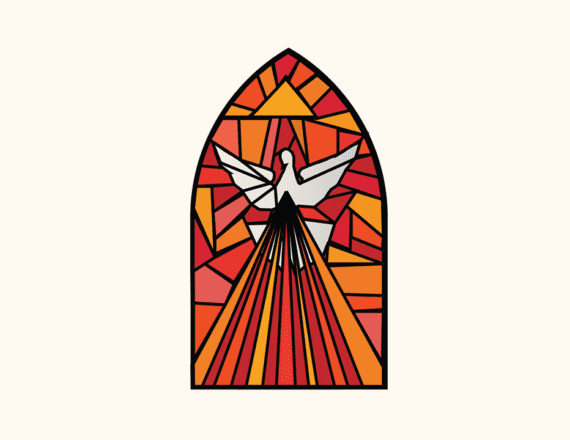By Genevieve Mougey
Advent was a special time in my family growing up. I suppose it is natural, then, for me to embrace the continuation of the season into my adult life. I hang up the Jesse Tree Symbols my grandpa cut from cedar across my curtain bar, just like my mother used to do. I put out the family creche on my sturdy cedar chest (also built by grandpa).
Certainly, as an adult, my Advent moments are a bit different than childhood memories, but what remains is an openness to quiet and stillness.
The first two weeks of Advent are spent readying our hearts and lives for the impending arrival of the Christ Child. By week three, we as a church are ready to move. To recognize our momentum, we light a different color candle – pink.
We begin to chant the O Antiphon responses in our daily prayers. O Wisdom, O Radix (Root of Jesse), O Prince of Peace, O Emmanuel are some of my favorites.
As we enter the third week of Advent, we move from gleeful expectation to a quieter week of joy. We see and hear how joy is to take hold of our hearts.
Kathleen Norris, in her book “Amazing Grace,” holds the definition of joy to be two-fold. Joy is not cheap–it cannot be bought. Nor is joy happiness which wafts in quickly and leaves suddenly. Rather, joy allows for the full dimension of human experience; gladness and grief may walk hand-in-hand.
I find this to be a full understanding of what joy allows us in our human experience. So much of the focus of Christmas is exuberant happiness. And this is right. Yet, I also think of those who experience an Advent season of grief-stricken firsts.
A first Advent/Christmas season without someone dear, a first time without a job, without an understanding of where the next meal will come from. This is the tension of the Advent season alongside the joy of Christmas. This is the tension we understand about our King being born in a manger.
There is real grief and deep discomfort, held alongside the exuberant happiness of large trees on city streets, packages wrapped in pretty papers, Santa posing for pictures, and a creche out in front of the church rectory.
What a beautiful understanding of how we can express the deep, bittersweet moments of what this time can hold. We do not diminish the grief of these moments, but our joy girds and holds all the tension. As we look to the moments of joy in our Advent journey, let us take time to examine where our gladness and grief lie.
Genevieve Mougey is senior national associate for Roman Catholic Engagement at Bread for the World.



